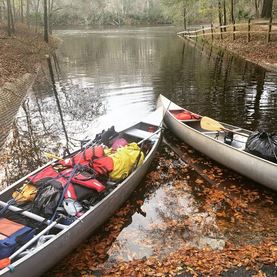 River camping is a fantastic activity that combines the best of car camping with the best of backpacking. It allows you to retreat into a remote area, like when backpacking, but bring some of your favorite creature comforts along, like with car camping. Keep the following tips in mind when planning a river trip and you’ll be happy as a clam. Everything Will Get Wet. Notice, I didn’t say “may get wet!” Consider every piece of gear in your canoe or kayak as an object that will be subjected to splashing, small leaks, and even rain. Prepare as needed, and you’ll be a much happier camper, especially in the winter! To make all your gear water resistant, purchase large drybags and use those to pack everything from clothing to sleeping bags, cooking equipment to the tent, and even firewood. Firewood can be double bagged in durable garbage bags and in most cases, should stay dry. Pro Tip: Bring at least one ‘chemical’ log for each evening fire you plan on having. The chemical logs burn hot enough to help light damp firewood but not hot enough for soaked firewood. Campsites Change Whenever we canoe camp, we prefer to camp on sandbars and other open areas along the edge of the river where it is possible to drag your vessel up onto shore and tie off. Hauling all your gear out of the boats every night to set up camp and back in the morning to pack up gets old, FAST. With that in mind, keep in mind that sandbars are not static things. Sandbars and related camp areas may move, change, be flooded, or even disappear depending on recent river conditions. If canoeing in an area where you can talk to a land manager, call them and ask about camping conditions. There may be established camps, like on the Suwannee River, that you can rely on as a backup plan. If not, keep an eye on the time as you paddle. If it is getting late in the day, settle for the best site you can find with enough time to set up camp before nightfall. Cook Real Food When river camping, especially in cooler weather, you shouldn’t have to resort to dehydrated food. Bring a camp stove, some pots and pans, even a dutch oven, and bring great food to feast on. Remember, this is slightly less convenient than car camping. With a gas stove and a fire, you can make a large variety of food that will keep any camper happy. I recommend some simple recipes to start, but remember to keep all meat colder than 40 degrees:
Nothing makes for grumpy campers faster than being cold, wet, and hungry. Cook real food. Trust us, these recipes are perfect for your hungry friends and family.http://amzn.to/20PBhOf Pro Tip: If you’re of age and interested in happy hour, we always plan light hor d'oeuvres and a cocktail to keep our canoe-mates full and happy while we set up camp and cook. Bring some durable containers that are made of plastic - not glass! The last thing you want in a wet canoe is broken glass. I recommend this metal bottle and this plastic flask; they are great for pre-mixed cocktails or for bringing wine/ingredients. I hope you have a great time canoe camping and enjoy the perks of getting outdoors with a little bit of luxury. If you have any questions, please let me know and I'll be glad to help! Happy camping! Like what you see? In the interest of full disclosure, I may earn a small commission when you purchase items through the links provided here. There is no increase in cost, to you or anyone else, associated with these links. I only recommend products myself or my close friends have used and love.
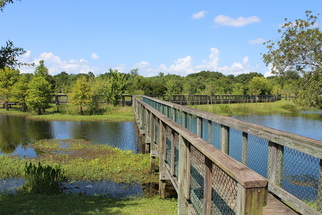 Brain-Eating Ameba, also referred to as Amoeba (British English), terrifies parents up and down the Florida peninsula. Think about it: Is there anything else in Florida that sounds so horrific? We're talking about a microscopic organism literally named for it's habit of infecting the brains of people who play in lakes. Even though snakes, alligators, and crocodiles get a bad reputation for being dangerous at least you can see them coming! Not the case with Brain-Eating Ameba. Brain-Eating Ameba, is actually a microscopic organism, assumed to be present in nearly all Florida's fresh-water water bodies like lakes, canals, and ponds. The often ill-fated disease caused by Naegleria fowleri is "Primary Amebic Meningoencephalitis" or PAM. According to the Center for Disease Control and Prevention (CDC) only 132 people have been infected since 1962. Unfortunately, all but three have died from the infection. Have I scared you enough yet? Don't worry. As you can tell by those statistics, the infection is incredibly rare. Fortunately, reducing your risk and your friends' and family's risk is easy. 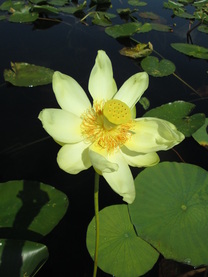 Brain-Eating Ameba is found in the mud of warm water lakes and ponds. To avoid infection, avoid stirring up the sediments in warm freshwater. Keeping one’s face away from stirred up sediment in warm water will significantly reduce the risk of infection. Children, especially young children, should be discouraged from digging in mud and sediments in lakes and ponds where they may be playing. This includes diving down to the bottom of a lake to dig plants or other things up. 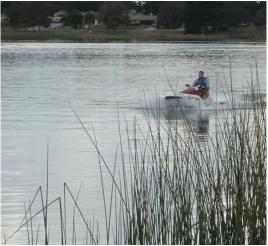 Amebas infect people when contaminated water travels up the nose and the ameba travels to the brain. Infections usually occur in July, August, and September but in Florida the season may start earlier and end later in the year due to our prolonged warm weather. This is important if you are one of the many people who like to like to participate in such activities as water skiing, wake boarding, tubing, or other water activity in the summer. When participating in these summertime activities, it is common for water to be forced up your nose. You can reduce your risk of infection during these activities by wearing ear plugs and a nose clip. You cannot be infected through drinking contaminated water, eating fish from contaminated water, or by talking to, touching, or being around another person infected with brain-eating ameba. Additionally, you cannot catch Naegleria fowleri from salt water. If you suspect you or someone you know may have contracted brain-eating ameba, check the following symptoms and call a medical professional immediately. Symptoms usually start 5 days after infection but may range 1-7 days from time of infection.
After symptoms present, death usually occurs within five days but may range from one day post-infection to twelve days post-infection. In the few known cases of survival, the patients recognized the symptoms early and sought proper treatment immediately. Share this information with everyone you know who enjoys our many gorgeous water features in Florida; this information may save a life! Avoiding Brain-Eating Ameba is easy and with a little knowledge, we can all have a safe and adventurous summer. Did you find this article helpful or informative? Pin the above image to share this post with others!
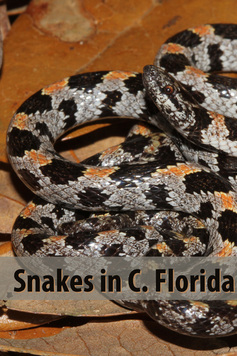 Like what you see? Consider pinning the above image to share with others. Like what you see? Consider pinning the above image to share with others. This month, I've been teaching a community workshop on "Snakes in Polk County." To my great surprise, my class has sold out or resulted in a full classroom at both locations! Why am I surprised? I didn't think so many people were interested in snakes. Clearly, I was wrong. For that reason, I thought it might be helpful to post some of the information I discussed at my class here. Snakes are a fascinating group of critters but tend to evoke all levels of fear and trepidation in the average resident or tourist. Let me assure you... you scare them as well! Below, I've listed some of the information we cover in the class. Snake Facts: |
| For more information on dealing with snakes in residential areas, check out the document series from University of Florida IFAS Extension. Or, check out Florida Fish and Wildlife's website at: http://myfwc.com/conservation/you-conserve/wildlife/snakes/ |
If you're interested in some books for further study, the ones I use in my office are:
| | |
Like what you see? In the interest of full disclosure, I may earn a small commission when you purchase items through the links provided here. There is no increase in cost, to you or anyone else, associated with these links.
Both snake photos on this page were used under thecreative commons license 2.0 in an unaltered form. Clicking on either photo will take you to the source's Flickr page.
Both snake photos on this page were used under thecreative commons license 2.0 in an unaltered form. Clicking on either photo will take you to the source's Flickr page.
The
Pathless
Woods
I'm Shannon.
Let's go somewhere.
Categories
All
Breweries
Camping
Camping Cuisine
Conferences
Crafting
Extension
First Time Homeowner
Flowers
Food
Gardening
Hiking
Hurricane Season
Invasive Species
Office Supplies
One Word
Outdoor Gear
Outreach
Professional Development
Travel
Wildlife
Words To The Wise
Archives
January 2023
December 2016
July 2016
March 2016
September 2015
August 2015
April 2015
March 2015
February 2015
January 2015
November 2014
October 2014
September 2014
August 2014
July 2014
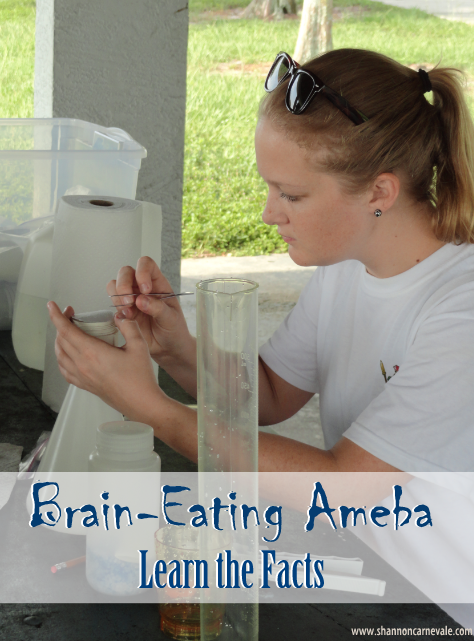

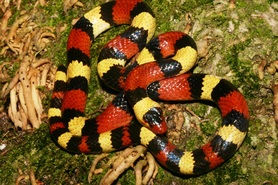

 RSS Feed
RSS Feed
